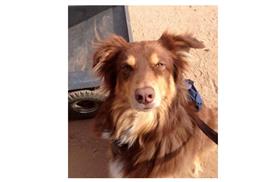 This article originally appeared on Dr. Mahaney’s Pet-Lebrity News column on Pet360.com as: Amanda Seyfried Shows Off Her Australian Shepherd on The Late Show with David Letterman.
This article originally appeared on Dr. Mahaney’s Pet-Lebrity News column on Pet360.com as: Amanda Seyfried Shows Off Her Australian Shepherd on The Late Show with David Letterman.
This summer, actress Amanda Seyfried made an appearance on “The Late Show with David Letterman” accompanied by her highly intellectual canine companion. Seyfried promoted her controversial movie Lovelace and showed off the remarkable skills of Finn, her faithful Australian Shepherd.
The Behavior of the Australian Shepherd Breed
Finn’s patience was on full display as he balanced a hamburger on his head for what seemed to be an eternity for the typical meat-hungry dog. Fortunately, Finn’s good behavior was appropriately rewarded, as he was ultimately given the delicious reward of the burger that was previously perched on his head. To see the video of the event, follow this link to the CBS’ The Late Show.
Read More: All About Australian Shepherds
I’m actually not surprised about Finn’s exceptional behavior, as the Australian Shepherd is a breed known for its intellect and trainability. Yet, being a medium to large pure-breed dog, there are many health issues associated with the breed of which potential owners must be aware before contacting a breeder or rescue society.
Potential Health Issues of the Australian Shepherd
Body systems affected by breed-related conditions (as listed on the petMD Australian Shepherd page) include:
Cardiac
Patent Ductus Arteriosis (PDA)- A heart condition where a duct that normally closes in the developmental process fails to do so and permits blood to flow in an abnormal direction.
Musculoskeletal
Canine Hip dysplasia (CHD)- A developmental abnormality where the head of the femur (femoral head) does not appropriately fit into its socket in the pelvis (acetabulum). As a result, painful arthritis and degenerative joint disease (DJD) can ensue.
Lumbarsacral Syndrome- A painful and often age-related disease where the nerves conducting electrical signals to the hind limbs are impinged by inflammation or bony deposits. Clinical signs include difficulty rising from a sitting or lying down position (or vice versa) and repeatedly pacing/circling before sitting or lying down.
Ophthalmic
Cataract- Opacity of the lens of the eye which prevents light from moving from the outside world onto the retina (light receiving layer on the back of the eye). Cataracts can be congenital, occur as an age related process, or be associated with disease (diabetes, etc.).
Collie Eye Anomaly (CAE)- This inherited disease has established foundations in a dog’s chromosomes and can cause multiple eye problems potentially causing blindness.
Distichiasis- Small, rigid hairs which line the edges of the eyelids that scrape the cornea (clear surface of the eye) and cause uncomfortable abrasions or ulcers.
Persistent Pupillary Membrane (PPM)- A developmental condition where portions of the iris stretches across the pupil (hole in the center of the iris through which light passes).
Progressive Retinal Atrophy (PRA)- A degenerative process where the retina atrophies (wastes away) which gradually causes blindness
Endocrine
Hypothyroidism- Deficient production of the thyroid hormone from the paired (right and left sides) thyroid glands leads to hypothyroidism. This common canine condition has the clinical signs of lethargy, exercise intolerance, weight gain, and poor skin and coat health.
Nervous
Epilepsy- Nervous system imbalance leading to grand (big) or petit (small) mal seizures.
What is Being Done to Prevent Problems in Future?
Although the Australian Shepherd has many breed-related conditions, responsible breeders work with veterinarians to help ensure their offspring aren’t passing on undesirable health problems. Ophthalmology (eye) exams, radiographs (X-rays) of the low back and hips, blood tests for hypothyroidism, and DNA tests for CAE are all helpful in keeping future generations of Australian Shepherd from having these debilitating or life-threatening conditions.
As an American Kennel Club (AKC) recognized breed, there’s much interest in promoting good Australian Shepherd genetic stock through the AKC’s Canine Health Foundation (CHF).
Hopefully, Seyfried did her homework before getting Finn and his years of life have been relatively disease-free. A pooch having Finn’s charisma certainly needs to be healthy for future on-camera appearances with his talented human-mother.
Image: Amanda Seyfried via Twitter
Want to receive my Pet-Lebrity News column via convenient email delivery? Sign up by pressing the Subscribe button on the right side of the page.
Thank you for reading this article. Your questions and comments are completely welcome (I’ll respond).
Please feel free to communicate with me through Twitter (@PatrickMahaney) and follow my adventures in veterinary medicine by liking Patrick Mahaney: Veterinarian Acupuncture Pain Management for Your Pets on Facebook.
Copyright of this article (2013) is owned by Dr Patrick Mahaney, Veterinarian and Certified Veterinary Acupuncturist. Republishing any portion of this article must first be authorized by Dr Patrick Mahaney. Requests for republishing must be approved by Dr Patrick Mahaney and received in written format.
 Print This
Print This
 Tweet This
Tweet This


